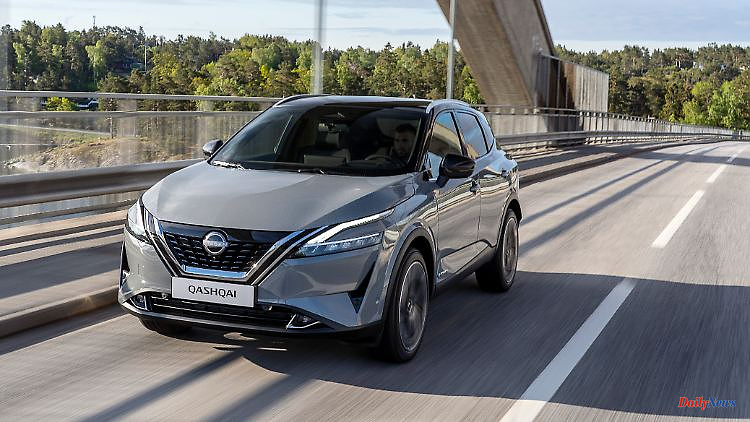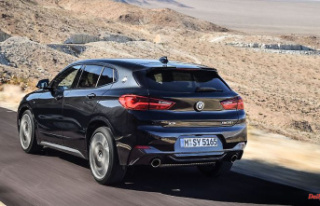The Qashqai crossover is by far Nissan's most important model in Europe. The Japanese have invested a lot in the new generation. Savings were only made on the drive selection - at least in quantitative terms.
With the Qashqai, Nissan established the modern compact crossover around 16 years ago. In the meantime, the former pioneer is one of many similarly positioned models, from which it also tries to differentiate itself with an unusual drive option.
short character
More high-seat station wagons than off-road vehicles, plenty of space, low prices and all-wheel drive technology only as an option - the basic recipe of the Qashqai doesn't seem particularly special today, but it was a unique selling point at the beginning of the millennium and made the Japanese a bestseller right away. Basically, the now third generation remains true to the established concept, but garnishes it with modern assistance and infotainment technology and refines it with a lot of fine-tuning in detail. Compared to its direct predecessor, the new one looks significantly more valuable.
body and chassis
With a length of 4.43 meters, the Qashqai is comparatively handy in its segment, but still offers a lot of space in the front and rear. The interior is well-crafted and solidly lined, comes across as rather factual and avoids exaggerated modernism. With the body, the designers not only paid attention to dynamic swing, but also to practical use. The A-pillars are narrow, which, like the additional triangular windows behind the rear doors, improves clarity.
The chassis is balanced with a slight focus on comfort, and the steering is very light. The SUV cuts a fine figure both in city traffic and on the road. But the comparatively light Japanese also suits winding country roads, but it is always more of a relaxed glider than a dynamic athlete.
The engine
When it comes to the range of drives, the first thing that stands out is the complete omission of a diesel, which is still available from many competitors in this segment. Instead, the core engine is the 1.3-liter turbo petrol engine known from various models in the Renault-Nissan-Mitsubishi alliance with either 103 kW/140 hp (from 28,640 euros) or 116 kW/158 hp (from 34,580 euros), each designed as a Mild hybrid with electric support when starting and accelerating. Power is sent to the front wheels via a manual six-speed gearbox. For the more powerful version, there is also a continuously variable automatic ("Xtronic", from 36,480 euros), which can be combined with all-wheel drive technology if desired (from 40,960 euros).
Technically the most interesting choice is the "E-Power" drive, a serial hybrid that combines a 1.5 petrol engine with an electric motor and puts 140 kW/190 hp on the road. The combustion engine acts as an on-board power plant for generating electricity, while the electric motor takes over the drive work. It also determines the driving experience, which impresses with its brisk acceleration, even power delivery and relatively low noise level. At least if the driver doesn't demand too much power. The drive unfolds its potential for efficiency above all in the city and when gently cruising along on country roads. If you drive the Qashqai quickly on the motorway, you need significantly more fuel than the 5.3 liters specified in the technical data. There are no environmental premiums or advantages in company car taxation for the e-power Qashqai because there is no external charging option.
Furnishing
Nissan offers five lines for the Qashqai. In the unattractive base "Visia", which is only offered in combination with the entry-level engine, the crossover comes across as quite simple, especially on the outside, and the comfort equipment is incomplete. The safety department, which includes blind spot warning, cross-traffic warning and distance cruise control, is comparatively lavishly stocked.
The next level of equipment "Acenta" supplements what is offered, among other things, with infotainment, alloy wheels and automatic air conditioning - so that everything important is on board. The "N-Connecta" level offers a little more comfort and design flair, which, among other things, makes displays and rims one size bigger. Above that are the two lines "Tekna" and "Tekna", which boasts technical extras, including a highway pilot.
Engines and equipment lines cannot be freely combined; the higher quality ones are only available for the stronger and more expensive drives. There are only a few other options: colors, materials and rims can be selected, and there are also various packages with bundled extras. Among other things, the "technology package" with head-up display and extended assistance functions for at least 950 euros is interesting.
recommendations












